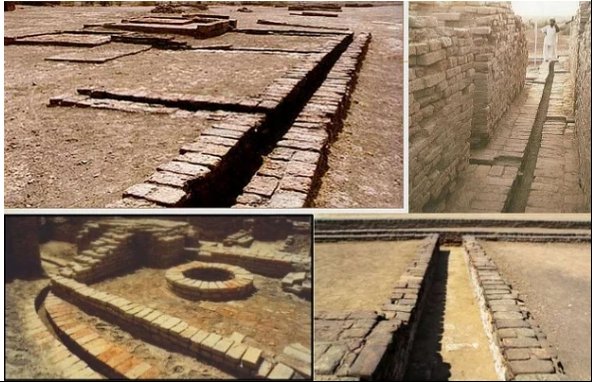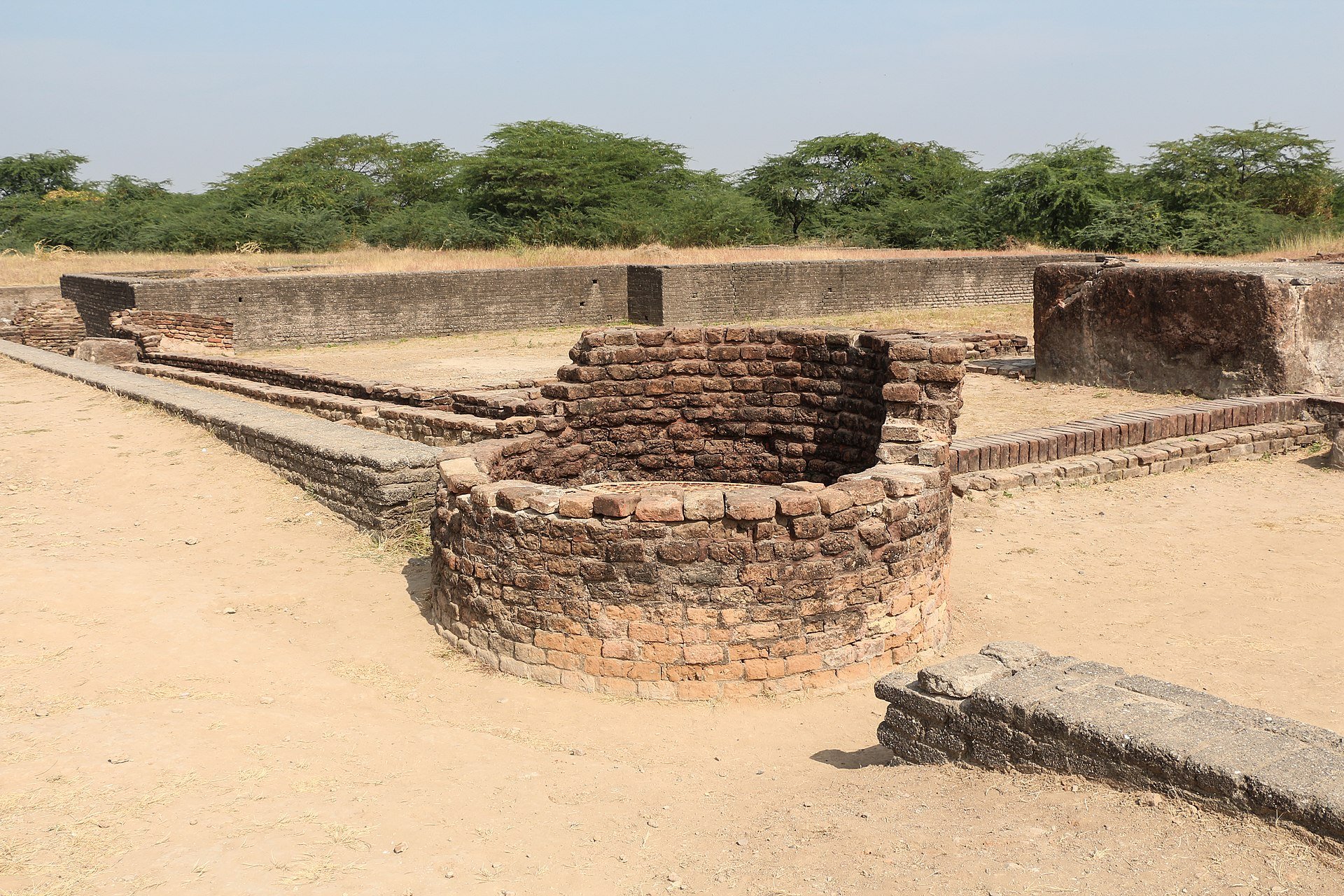Hydraulic Engineering: "The kind of efficient system of Harappans of Dholavira, developed for conservation, harvesting and storage of water speaks eloquently about their advanced hydraulic engineering, given the state of technology in the third millennium BC" says R.S.Bist, Joint Director General (Rtd.), Archaeological Survey of India. One of the unique features of Dholavira is the sophisticated water conservation system of channels and reservoirs, the earliest found anywhere in the world, built completely of stone. The city had massive reservoirs, three of which are exposed. They were used for storing fresh water brought by rains or to store water diverted from two nearby rivulets. This clearly came in response to the desert climate and conditions of Kutch, where several years may pass without rainfall. A seasonal stream which runs in a north–south direction near the site was dammed at several points to collect water.
Dams: In Neolithic Mehrgarh pre-Harappan phase (7000-3200 BC) people had developed a water storage system called Bund to trap rain and torrential waters in the semi-arid region of Kach in-between the Indus river and Balochistan mountains where the seasonal Bolan river flows. Stone walls were built along the slope of torrential river beds to serve as reservoir dams, restrict flow of water and for diverting water into canals for irrigation.
Stadium: the world's earliest stadium with terraced stands was constructed at Dholavira and Juni Kuran. Two stadiums have been identified at the ancient site, one is considered a ceremonial ground, another, a small stadium. At Juni Kuran, two separate stadiums for commoners and the elite have been discovered.
Bronze sculpture: Dancing Girl from Mohenjodaro belonging to the Harappan civilisation dating back to 2500 BC is said to be the first bronze statue.
Lost wax casting: a detailed, full-field photoluminescence study of a 6,000 year old copper "wheel" amulet from Mehrgarh in Balochistan has opened the door to many new facts about this period of history. This study by Ipanema, the European center for the study of ancient materials, believes that this is the oldest known example of the "lost wax" casting technique, one of the most important innovations in the history of metallurgy.
Shampoo: Pre-Harappan level of Banawali (2750-2500 BC), Haryana have revealed traces of a mixture of shikakai with soap nuts and Amla (Indian Gooseberry) of what would constitute herbal shampoo, exhibiting ancient roots of South Asian hygiene.
Mordant (Dye Fixing): Mordants for fixing dyes were used since the Indus Valley Civilisation, it exhibited Indian mastery over clothes dyeing which was unrivalled until the invention of western chemical dyes.
Stoneware: Earliest stonewares, predecessors of porcelain have been recorded at the Indus Valley Civilisation sites of Harappa and Mohenjo Daro, they were used for making stoneware bangles.
Seven Stones: An Indian subcontinent game also called Pitthu is played in rural areas and has its origins in the Indus Valley Civilisation.
English Bond: This bond has alternating stretching and heading courses, with the headers centred over the midpoint of the stretchers, and perpends in each alternate course aligned. Harappan architecture in South Asia was the first use, anywhere in the world, of so-called English bond in building with bricks.
Saw, modern: True saws with modern teeth were a Harappan invention.
Needle's eye: The eye of the needle was another Harappan contribution.
Etched Carnelian beads: are a type of ancient decorative beads made from carnelian with an etched design in white. They were made according to a technique of alkaline-etching developed by the Harappans during the 3rd millennium BC and were widely disperced from China in the east to Greece in the west.
Finished Ivory Goods: Finished Ivory products like kohl sticks, pins, awls, hooks, toggles, combs, gamesmen, dice, inlay and other personal ornaments are considered to have its origin form Harappan sites.
Discoveries
Gemstones and Lapis Lazuli: Lapis lazuli artifacts, dated to 7570 BC, have been found at Bhirrana, which is the oldest site of the Indus Valley Civilisation.
Sesame oil: Sesame seeds were one of the first crops processed for oil as well as one of the earliest condiments. Sesame was cultivated during the Indus Valley Civilisation and was the main oil crop. It was probably exported to Mesopotamia around 2500 BC.
Pashmina: Samples of wool fibres discovered from corroded copper artifacts from Harappa dating back to the Indus Valley Civilisation are extremely fine and resemble Pashmina and Shatoosh.
















